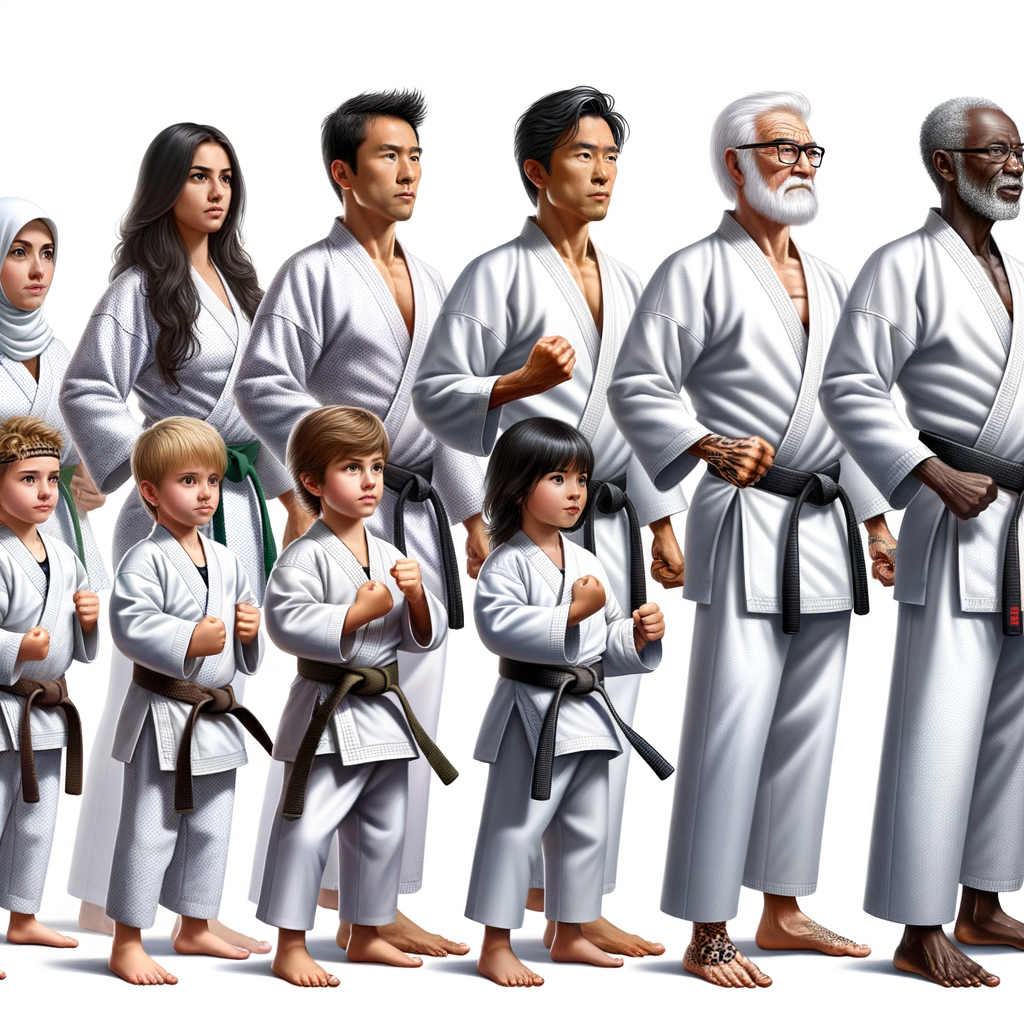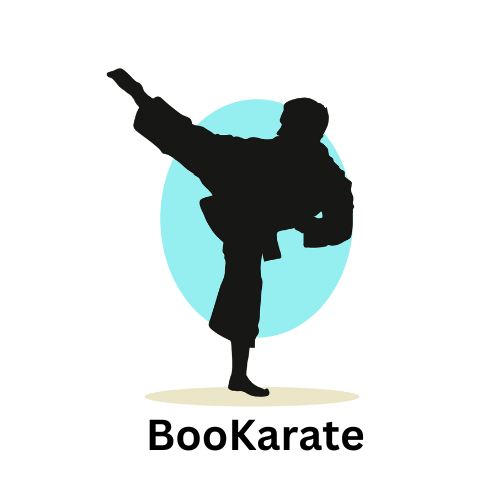
Introduction to Karate
When we talk about martial arts, one of the first that comes to mind is Karate. It’s a discipline that combines physical strength, mental focus, and spiritual growth. In this section, we’ll delve into the origin and history of Karate, understand its philosophy, and explore some of its popular styles.
-
Origin and History of Karate
Karate, which means “empty hand” in Japanese, originated in Okinawa, Japan, in the 17th century. It was a time when weapons were banned by the ruling class, leading the Okinawans to develop a form of self-defense using only their bodies. Karate was introduced to mainland Japan in the early 20th century and has since spread worldwide.
-
Understanding the Philosophy of Karate
Karate is not just about physical strength; it’s a way of life. The philosophy of Karate is deeply rooted in the principles of respect, discipline, and self-improvement. It teaches practitioners to be peaceful, humble, and respectful, using their skills only for self-defense and never for aggression.
-
Popular Styles of Karate
There are several styles of Karate, each with its unique techniques and philosophies. Some of the most popular ones include:
- Shotokan: Known for its deep, long stances and focus on strength and power.
- Goju-Ryu: A style that combines hard striking attacks with softer, circular techniques for blocking and controlling the opponent.
- Shito-Ryu: A style that blends the characteristics of Shotokan and Goju-Ryu, emphasizing speed and fluid movements.
- Wado-Ryu: A style that incorporates elements of Jujitsu, focusing on body shifting to avoid attacks.
Whether you’re interested in learning Karate for self-defense, physical fitness, or personal growth, understanding its history, philosophy, and styles can help you appreciate this martial art even more. As you embark on your Karate journey, remember the words of Gichin Funakoshi, the father of modern Karate: “The ultimate aim of Karate lies not in victory or defeat, but in the perfection of the character of its participants.”
The Journey of Karate Training
Embarking on a journey of Karate training is a rewarding and transformative experience. It requires dedication, discipline, and a willingness to learn. Let’s explore the initial steps in starting your Karate practice.
Starting Your Karate Practice
Starting your Karate practice involves three crucial steps: finding the right dojo, understanding the basics of Karate, and taking your first steps in Karate training. Let’s delve into each of these steps.
-
- Finding the Right Dojo
Finding the right dojo, or Karate training school, is the first step in your Karate journey. The dojo should have a positive and respectful atmosphere, experienced instructors, and a curriculum that aligns with your goals. It’s important to visit several dojos, observe classes, and speak with instructors before making your choice.
-
- Understanding the Basics of Karate
Once you’ve found the right dojo, it’s time to understand the basics of Karate. Karate is a martial art that originated in Okinawa, Japan. It involves a variety of techniques, including punches, kicks, knee strikes, and open-hand techniques. Karate also emphasizes self-discipline, respect, and a strong spirit. Understanding these basics will provide a solid foundation for your training.
-
- First Steps in Karate Training
Your first steps in Karate training will likely involve learning basic stances, punches, and kicks. You’ll also start to learn Kata, or forms, which are prearranged sequences of movements. Remember, it’s normal to feel a bit overwhelmed at first. With practice and patience, you’ll start to feel more comfortable and confident.
Starting your Karate practice is a journey that requires finding the right dojo, understanding the basics of Karate, and taking the first steps in training. It’s a journey that will challenge you, teach you, and ultimately transform you. Remember, the journey of a thousand miles begins with a single step.
Evolving Through Karate
As you continue your journey in Karate, you will experience a series of transformations. This evolution is marked by three significant milestones: progressing through the belt system, developing advanced Karate skills, and competing in Karate tournaments.
-
- Progressing through the Belt System
The belt system in Karate is a visual representation of your progress. Each color signifies a different level of skill and knowledge. You start with a white belt, symbolizing a blank slate. As you learn and grow, you earn new belts, each one a different color. The black belt is the highest rank, representing mastery of Karate techniques and principles.
-
- Developing Advanced Karate Skills
As you progress through the belt system, you will develop advanced Karate skills. These include complex kicks, punches, and defensive maneuvers. You will also learn Kata, a series of choreographed movements that demonstrate your understanding of Karate techniques. Mastering these skills requires dedication, discipline, and countless hours of practice.
-
- Competing in Karate Tournaments
Competing in Karate tournaments is a significant part of your evolution. These competitions provide an opportunity to test your skills against others. They also teach valuable lessons about sportsmanship, respect, and handling pressure. Whether you win or lose, every tournament is a learning experience that contributes to your growth as a Karate practitioner.
It’s not just about learning to fight. It’s about discipline, respect, and the pursuit of excellence. As you progress through the belt system, develop advanced skills, and compete in tournaments, you will transform not just as a Karate practitioner, but as a person.
Transformation Through Karate
One of the most significant aspects of karate is the transformation it brings to the practitioner. This transformation is not just about learning how to defend oneself. It’s about the physical, mental, and emotional growth that comes with consistent training. In this section, we will focus on the physical benefits of karate.
Physical Benefits of Karate
Many people start karate for its physical benefits. The practice of karate offers a full-body workout that improves strength, flexibility, coordination, balance, and cardiovascular fitness. Let’s delve deeper into these benefits.
-
- Improvement in Strength and Flexibility
Regular karate training involves a lot of stretching and strengthening exercises. These exercises help to improve the flexibility and strength of the muscles. A study showed that children who practiced karate for six months had a significant increase in their flexibility and strength compared to those who did not practice karate.
-
- Enhancement of Coordination and Balance
Coordination and balance are crucial in karate. Each karate move requires the practitioner to balance their body while coordinating their arms and legs. This continuous practice enhances their coordination and balance over time. Karate students often find that they are less clumsy and more agile in their daily activities.
-
- Cardiovascular Fitness through Karate
Cardiovascular fitness is another significant benefit of karate. The intense workouts increase heart rate, improving the heart’s efficiency and endurance. A study found that people who practiced karate had a lower resting heart rate and higher cardiovascular endurance than those who did not practice any martial arts.
It’s a comprehensive workout that improves strength, flexibility, coordination, balance, and cardiovascular fitness. So, if you’re looking for a fun and effective way to stay fit, consider taking up karate.
Mental and Emotional Growth Through Karate
Karate is not just about physical strength and agility; it’s a discipline that fosters mental and emotional growth. Let’s explore how karate helps in building discipline and focus, boosting confidence and self-esteem, and providing stress relief and emotional balance.
-
- Building Discipline and Focus
Learning karate requires a high level of discipline and focus. Each movement, each stance, each technique demands precision and consistency. This practice of discipline and focus in karate classes can translate into everyday life, helping individuals to concentrate better on their tasks and responsibilities.
-
- Boosting Confidence and Self-Esteem
Mastering new skills and techniques in karate can significantly boost one’s confidence and self-esteem. Every belt earned, every technique mastered, is a testament to one’s ability and hard work. This sense of accomplishment can foster a positive self-image and a strong belief in one’s capabilities.
-
- Stress Relief and Emotional Balance
Karate is also a powerful stress-reliever. The physical exertion involved in training can help to release pent-up tension, promoting relaxation and emotional balance. Furthermore, the emphasis on controlled breathing and mindfulness in karate can contribute to improved mental health and emotional stability.
| Benefit | Description |
|---|---|
| Discipline and Focus | Improves concentration and consistency in tasks and responsibilities. |
| Confidence and Self-Esteem | Boosts self-image and belief in one’s capabilities through mastery of skills and techniques. |
| Stress Relief and Emotional Balance | Promotes relaxation, emotional stability, and improved mental health through physical exertion, controlled breathing, and mindfulness. |
In conclusion, karate offers a holistic approach to personal development, fostering not just physical strength, but also mental resilience and emotional balance. It’s a journey of self-discovery and growth that can benefit individuals of all ages.
Case Studies: Personal Growth Through Karate
Let’s delve into some real-life examples that illustrate how karate can contribute to personal growth and transformation. These case studies will provide a deeper understanding of the impact of karate on individuals’ lives.
-
- Case Study 1: Transformation of a shy individual into a confident person
Meet John, a 12-year-old boy who was always shy and hesitant to interact with others. His parents decided to enroll him in a local karate class, hoping it would help him overcome his shyness. After a year of regular training, John’s transformation was remarkable. He became more confident and outgoing. His grades improved, and he started participating in school activities. His karate instructor noted that John’s newfound confidence came from the discipline and self-assurance he gained through karate.
-
- Case Study 2: How Karate helped in overcoming fear and anxiety
Sarah, a 30-year-old woman, had always struggled with fear and anxiety. She decided to take up karate as a way to manage her fears. After six months of training, Sarah noticed a significant decrease in her anxiety levels. She felt more in control of her emotions and was better able to handle stressful situations. Sarah attributes her progress to the focus and calmness she learned from her karate practice.
-
- Case Study 3: Karate as a tool for physical and mental rehabilitation
Tom, a war veteran, was struggling with physical and mental trauma after returning from his service. His therapist suggested karate as a form of rehabilitation. Tom was skeptical at first, but he decided to give it a try. After a few months, he noticed improvements in his physical strength and mental resilience. He found that the discipline and focus required in karate helped him manage his post-traumatic stress disorder symptoms. Tom continues to practice karate as a part of his recovery process.
These case studies highlight the transformative power of karate. It’s more than just a physical activity; it’s a tool for personal growth and self-improvement. Whether it’s gaining confidence, overcoming fears, or aiding in rehabilitation, karate has proven its effectiveness time and again.
Conclusion: The Lifelong Journey of Karate
As we reach the end of our exploration into the world of Karate, it’s important to remember that the journey doesn’t end here. Karate is more than just a martial art; it’s a lifelong journey of continuous learning, personal growth, and transformation.
-
- Continuous learning in Karate
Just like any other journey, the path of Karate is filled with continuous learning. Every punch, every kick, every block is an opportunity to learn and grow. It’s not just about mastering the techniques; it’s about understanding the philosophy behind them. The more you practice, the more you learn. And the more you learn, the more you realize there’s so much more to learn. That’s the beauty of Karate.
-
- Applying Karate principles in daily life
But Karate is not just about what happens in the dojo. The principles of Karate – respect, discipline, perseverance, and humility – can be applied in our daily lives. It’s about standing up for what’s right, even when it’s hard. It’s about respecting others, even when they don’t respect you. It’s about persevering, even when the odds are against you. And it’s about being humble, even when you’re on top of the world. That’s the power of Karate.
-
- Encouraging others to explore the transformative power of Karate
And finally, as we continue on our own Karate journey, let’s not forget to encourage others to embark on theirs. Let’s share the lessons we’ve learned, the challenges we’ve overcome, and the transformations we’ve experienced. Because Karate is not just about transforming ourselves; it’s about transforming the world around us. And that’s a journey worth sharing.
It’s a journey that transcends the dojo and permeates every aspect of our lives. And it’s a journey that, once embarked upon, can truly change our lives for the better.






